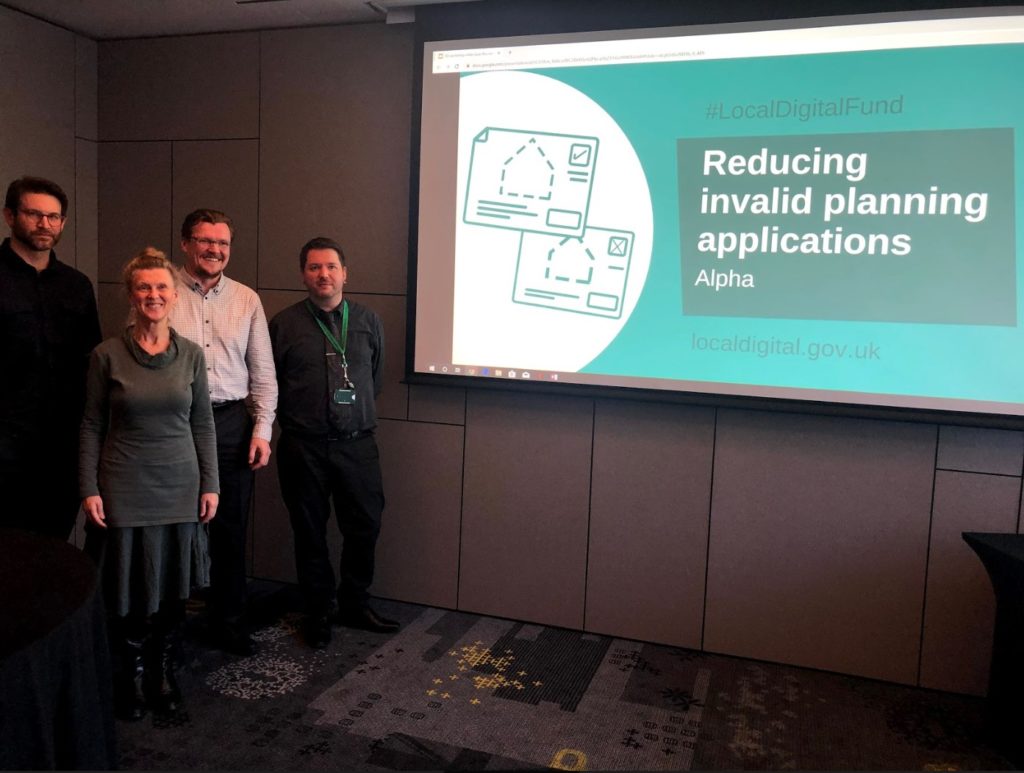Feedback
The research was developed around a clear problem statement: about 50% of planning applications that councils receive are invalid. This statement was explored via a number of research techniques, including a survey, stakeholders and priority mapping sessions.
User research was used to better understand the project problem. Meticulous preparation went into screening and selecting users to test with, ensuring that a range of different users groups are represented. The team tested with an impressive number of users: 96, however, no councils outside of project partners took part in user research. Involving more councils in the testing would add to the scalability of findings.
The produced business case provides a comprehensive explanation of non financial benefits as well as costs. The documents also provide savings estimations for the councils and end users. Providing more evidence driven figures and a value for money analysis would add a level of robustness to the business case.
The project team produced a recommendations report for Beta that explores three barriers to progressing with the project and ways to mitigate those. This could be reused by other projects of similar nature to inform their risk considerations. Presenting a plan for scaling and a few more options for taking the project forward would provide an additional layer of confidence in the project.
The reports provide a clear narrative about the prototype, including what was prototyped and what’s missing. Prototype code is available on GitHub for anyone else to use. We expect the prototype will continue to be iterated and built up, with instructions provided on how to use it.
Overall, the produced reports provide good explanations for why the need for this project exists by including reasons for invalid applications. It also tells the story about how the team worked together which would be useful to anyone looking to run a collaborative project. Producing a lessons learnt section or recommendations for councils wanting to follow their work could make it easier for other councils to come on board.

 UK Ministry of Housing, Communities and Local Government (MHCLG)
UK Ministry of Housing, Communities and Local Government (MHCLG) 